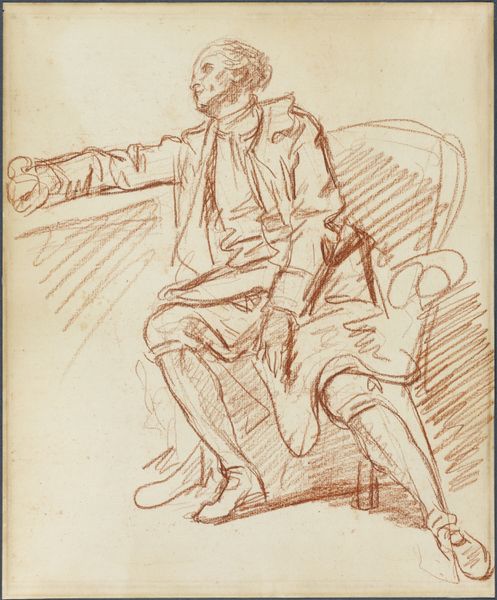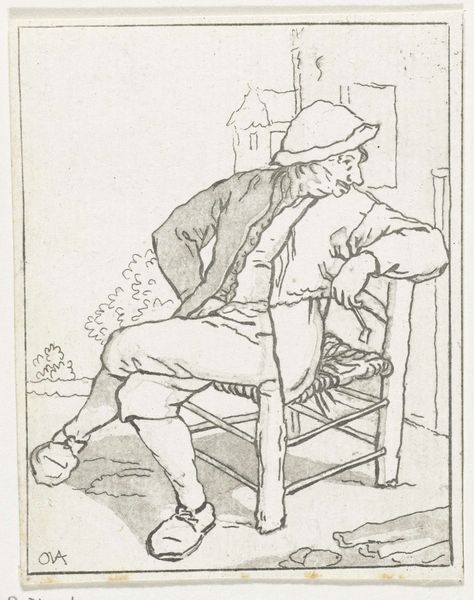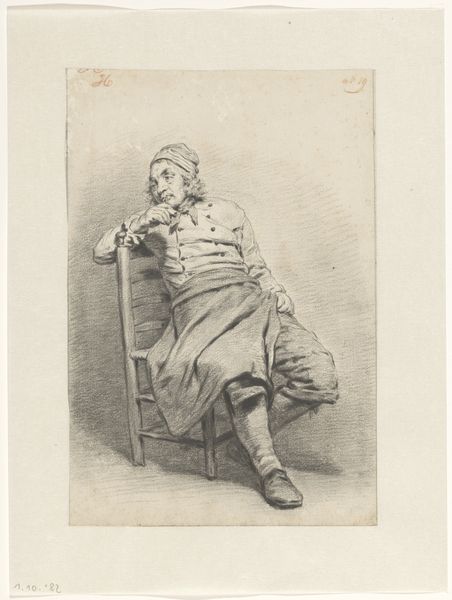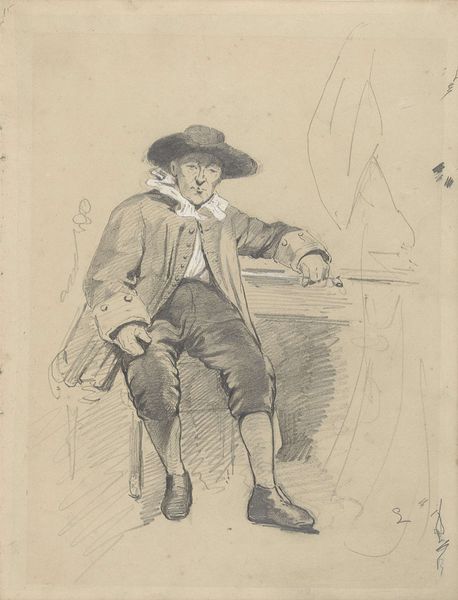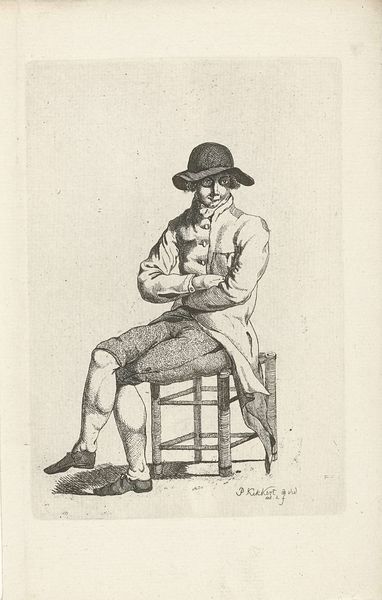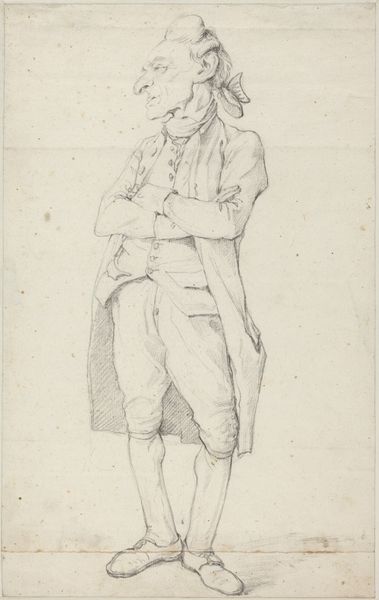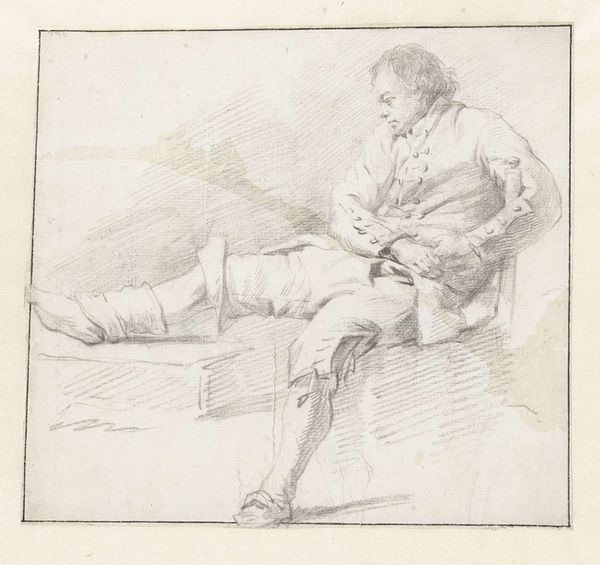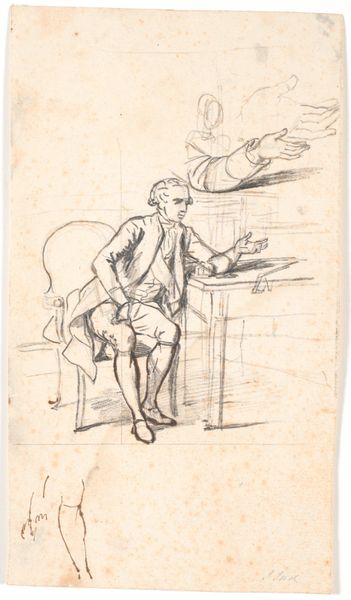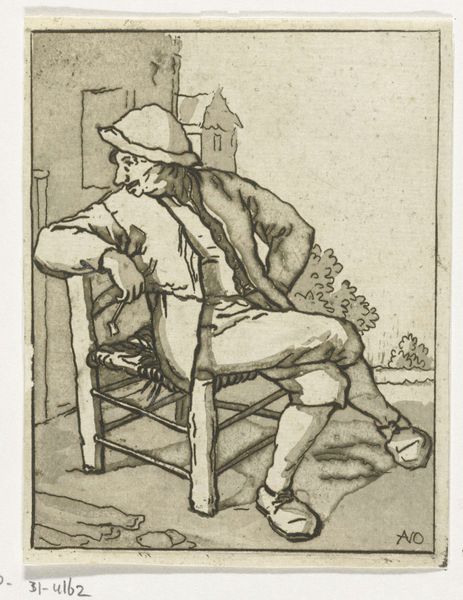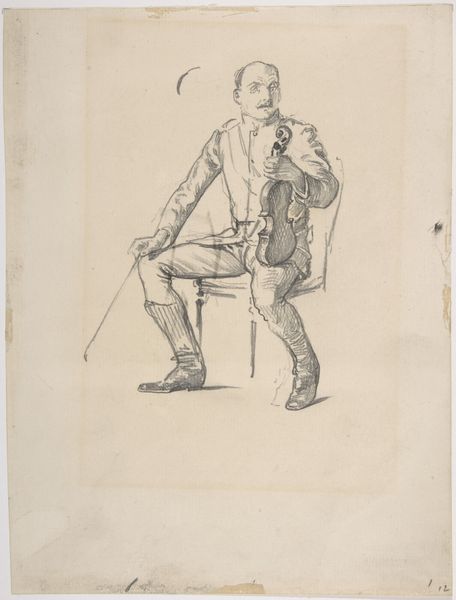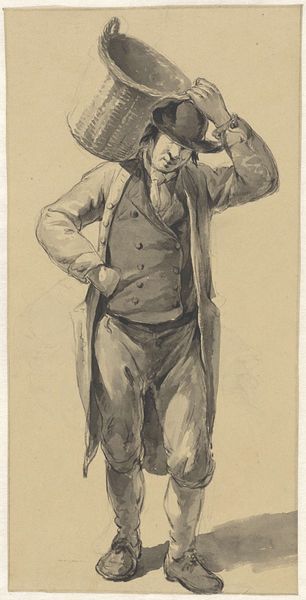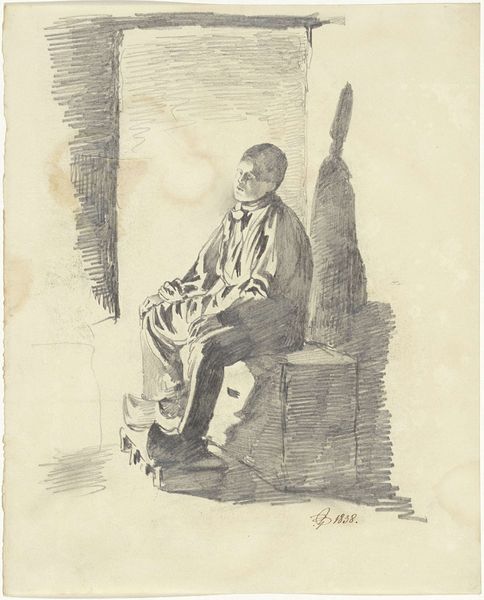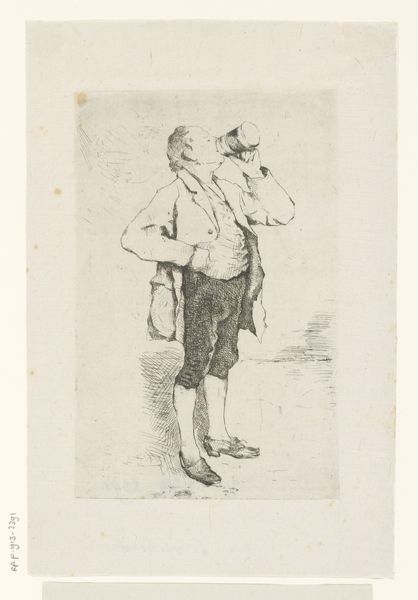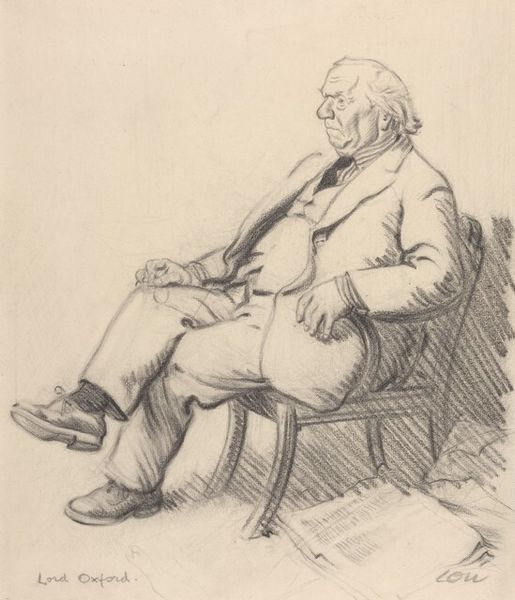
drawing, pen
#
portrait
#
drawing
#
pencil sketch
#
figuration
#
romanticism
#
pen
#
genre-painting
#
academic-art
Dimensions: height 301 mm, width 240 mm
Copyright: Rijks Museum: Open Domain
Editor: Here we have "Zittende man, slapend aan een tafel," which translates to "Sitting man, sleeping at a table." It was created sometime between 1811 and 1873 by Pieter van Loon and is currently housed in the Rijksmuseum. The piece, crafted with pen and pencil, presents a man in repose. I find it really captures a sense of everyday life, but what strikes you when you look at this drawing? Curator: What immediately grabs my attention is the method of production. It's not simply the final image, but how that image came to be. Think about the labor involved – the physical act of applying pen and pencil to paper. What kind of paper was used? What was the artist’s process? These elements ground the piece in a tangible reality, connecting it to the artist’s studio and the social context in which it was created. Do you see any clues as to his possible working conditions? Editor: That's an interesting perspective! I hadn’t considered the paper itself. Given that it's a preparatory drawing, would it be reasonable to suppose this would be a common, easily accessible medium rather than some fine vellum? Curator: Precisely! That access is key. This wasn't necessarily "high art" destined for a gallery from the outset. It's a study, a process, potentially for a larger project. It makes you consider the distinction, or rather, the dissolution of the distinction between art and craft. The artist’s labour, the materials they used, they are integral to the art's very being. How do you think it might differ had Van Loon been using different materials? Editor: Wow, I see what you mean. I never considered the materials themselves being as important as the image depicted. Now I can see that reflecting on its making provides even more insights. Thanks! Curator: Exactly, looking closely at the process behind an artwork opens up new avenues of understanding and appreciation.
Comments
No comments
Be the first to comment and join the conversation on the ultimate creative platform.
